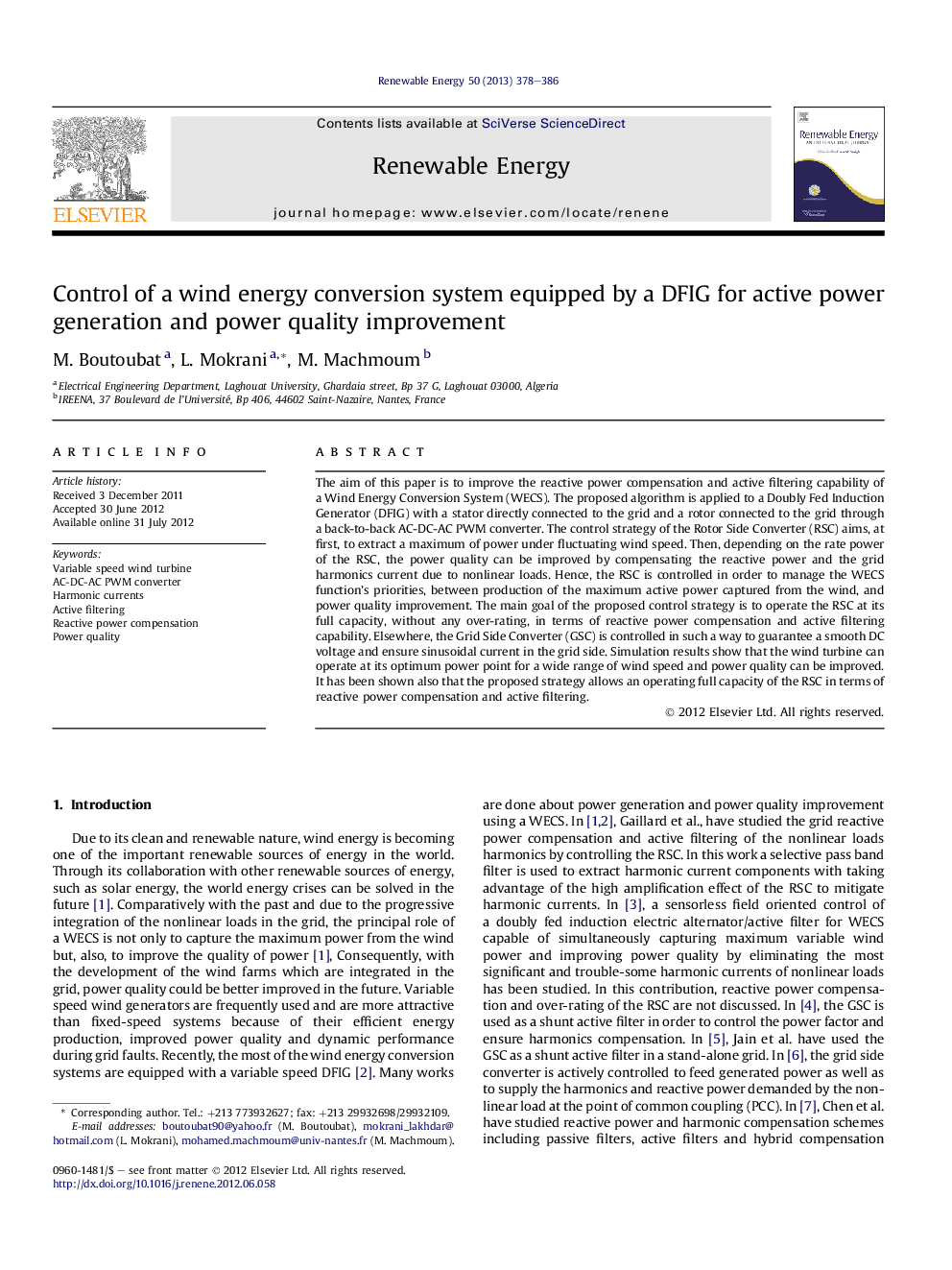| Article ID | Journal | Published Year | Pages | File Type |
|---|---|---|---|---|
| 300387 | Renewable Energy | 2013 | 8 Pages |
Abstract
The aim of this paper is to improve the reactive power compensation and active filtering capability of a Wind Energy Conversion System (WECS). The proposed algorithm is applied to a Doubly Fed Induction Generator (DFIG) with a stator directly connected to the grid and a rotor connected to the grid through a back-to-back AC-DC-AC PWM converter. The control strategy of the Rotor Side Converter (RSC) aims, at first, to extract a maximum of power under fluctuating wind speed. Then, depending on the rate power of the RSC, the power quality can be improved by compensating the reactive power and the grid harmonics current due to nonlinear loads. Hence, the RSC is controlled in order to manage the WECS function's priorities, between production of the maximum active power captured from the wind, and power quality improvement. The main goal of the proposed control strategy is to operate the RSC at its full capacity, without any over-rating, in terms of reactive power compensation and active filtering capability. Elsewhere, the Grid Side Converter (GSC) is controlled in such a way to guarantee a smooth DC voltage and ensure sinusoidal current in the grid side. Simulation results show that the wind turbine can operate at its optimum power point for a wide range of wind speed and power quality can be improved. It has been shown also that the proposed strategy allows an operating full capacity of the RSC in terms of reactive power compensation and active filtering
Keywords
Related Topics
Physical Sciences and Engineering
Energy
Renewable Energy, Sustainability and the Environment
Authors
M. Boutoubat, L. Mokrani, M. Machmoum,
